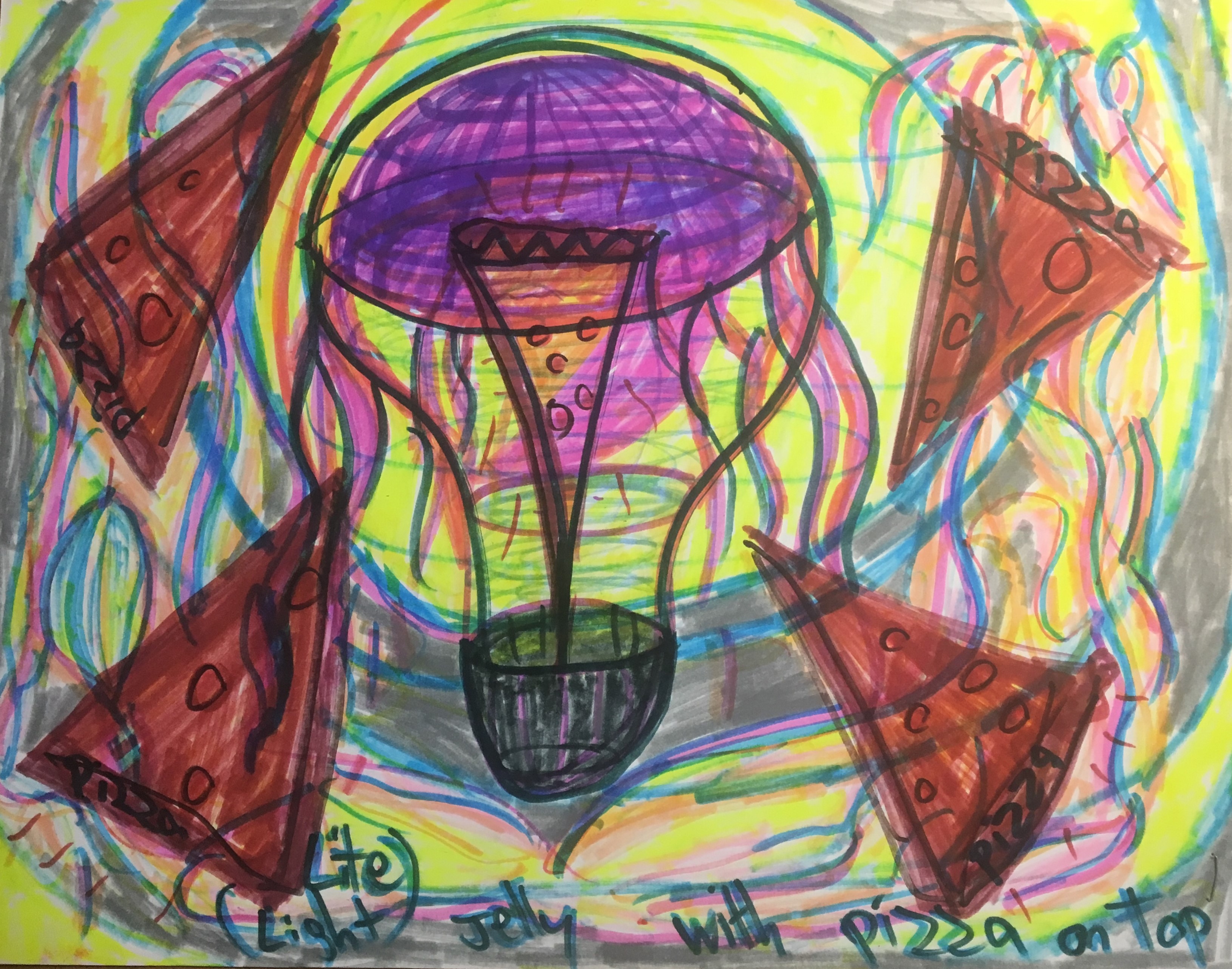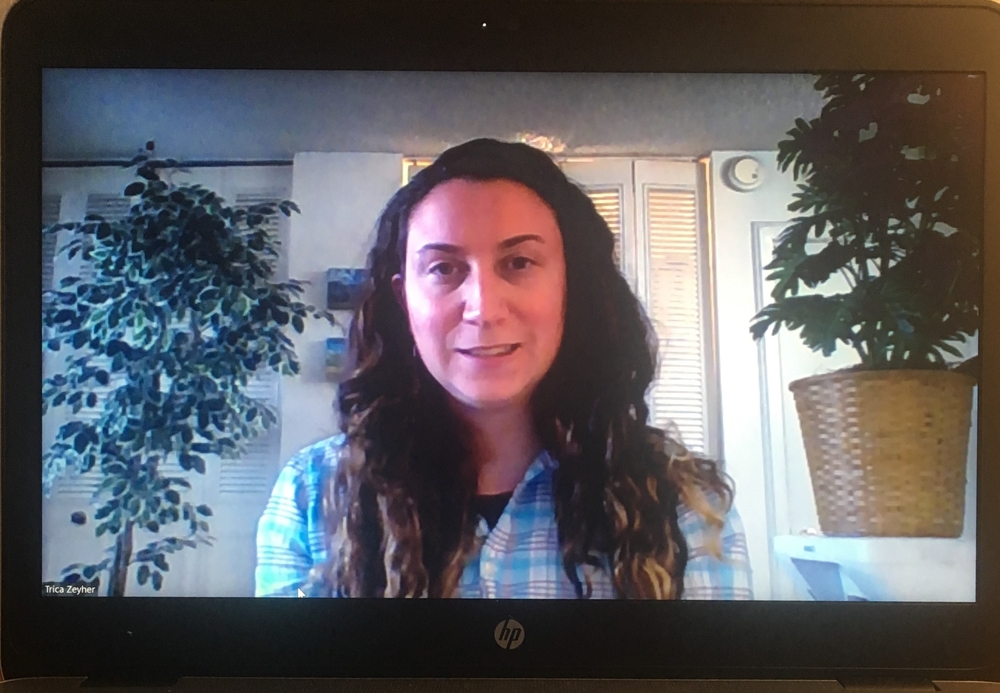April 6, 2020 | Trica Zeyher
Read Trica’s related blog post, “From an Online Art Therapy Grad Student, Here are 5 Tips for Making the Transition to Virtual”
As we enter week-four of our new reality of social distancing, everything has changed. Even though my art therapy master’s program at Edinboro University is already online, I have experienced upheavals in my own life and witnessed similar chaos in the lives of my clients, educators, friends and family. Already knowing the benefits of virtual intimacy in therapy from my own online studies and experience as a client, I would like to share what I have been thinking about during this coronavirus social distancing.
Therapists at my internship site are finding ways to connect to our clients who are dealing with homelessness
While I do all my studies and supervision in art therapy online, my internship had been in-person until March 16th. At Mental Health Partners (MHP) in Boulder, Colorado, I work with the 12-person team supporting marginalized clients who are mostly homeless. I have been very worried about the homeless individuals I had been treating face-to-face in my art therapy groups and have been grateful for the support I’ve received from my supervisors and advisors, both from school and MHP. They validated my feelings of loss and worry and helped me find ways to cope with this uncertainty.

Some light hearted art I made participating in the online open art group with Edinboro students and faculty.
During a virtual MHP team meeting via Zoom, staff shared how clients were interacting during this isolation and what services MHP continues to provide, including crisis services, mental health services, and self-care social connection tips, and downloadable materials. I was interested to hear how other staff members were making the transition to online without having had the experiences that I have had from my online training and education.
Several clinicians told me that they had to refer suicidal clients to crisis phone numbers, and how very difficult it was to not be there in person with them. Another staff member, whose client did not have any cell phone minutes to make calls, was able to have the session via Zoom, which the client was able to download to their phone. This client was dealing with homelessness and staying with a small group of other individuals (who were also MHP clients) in a garage during a snow storm here in Boulder. The therapist’s call through Zoom turned into a group session for all of them. One client, afraid to leave their home due to social distancing, chose to take a walk in nature with a therapist on their phone for support and company. No germs were spread, and the client was able to obtain exercise and socialization.
My perspective on the client side of tele-therapy
In these current circumstances, a client may come to therapy via Zoom, after just saying goodbye to a family member through the same application. I myself had a similar experience as a client when my half-brother died from lung cancer. My sister was a nurse where he was being treated as a patient, so she was able to set up a FaceTime call for me with him. The last words I remember him saying to me through my computer were, “Are you going to visit me?” I responded, “I love you either way.” He was distant and did not understand that I could not visit him. But thanks to technology and my sister working where he was being treated, I was able to say goodbye by letting him know I loved him.
Later, I received telehealth therapy through Zoom from a male therapist I instantly felt connected to him, and coincidentally, his appearance reminded me of my brother, especially his beard. The therapist mentioned that some people don’t see telehealth as a ‘real’ experience. But saying goodbye to my brother was real to me, and having a telehealth therapist feel ‘real’ as well was reassuring for me. My experience of virtual intimacy was valid and I plan to continue meeting with my personal therapist through Zoom.
Although it felt a real loss not having been there in person when my brother died, I truly value such online interactions and am able to enjoy them too. For example, my niece who lives in New York just turned two on March 20th, and I was there with her on FaceTime. Happy birthday Bella — I love you!
Life and death are still occurring around us as we live on Earth as humans. Clients are witnessing saying goodbye to the dying and sick through virtually intimate experiences, but they are also witnessing the growth of human life too.
For therapists in particular, self-care is especially important as we seek to support clients through these trying times. I am aware that my health, be it my mind, body, or spirit, affects not only myself and my clients, but also those that I live with at home. A virtual conversation might not allow you to touch or reach out to one another in the same way, but virtual intimacy is valid and real, and by helping our clients to know this, we can help them to connect more to each other and to their new normal.
Patrica (Trica) Zeyher, Master’s in Clinical Mental Health Counseling and Art Therapy Candidate
 Trica Zeyher is a student at Edinboro University’s online dual master’s program in Clinical Mental Health Counseling and Art Therapy and plans to graduate in May of 2020. She earned her BA at the State University of New York (SUNY) at Potsdam, where she majored in Studio Art and minored in Expressive Arts Therapy. Trica lives in the Boulder, Colorado area and is currently completing her second internship at Mental Health Partners in Boulder, Colorado, where she provides telehealth art therapy services. She completed her practicum at Colorado Recovery. Read more about Trica Zeyher on her website.
Trica Zeyher is a student at Edinboro University’s online dual master’s program in Clinical Mental Health Counseling and Art Therapy and plans to graduate in May of 2020. She earned her BA at the State University of New York (SUNY) at Potsdam, where she majored in Studio Art and minored in Expressive Arts Therapy. Trica lives in the Boulder, Colorado area and is currently completing her second internship at Mental Health Partners in Boulder, Colorado, where she provides telehealth art therapy services. She completed her practicum at Colorado Recovery. Read more about Trica Zeyher on her website.
